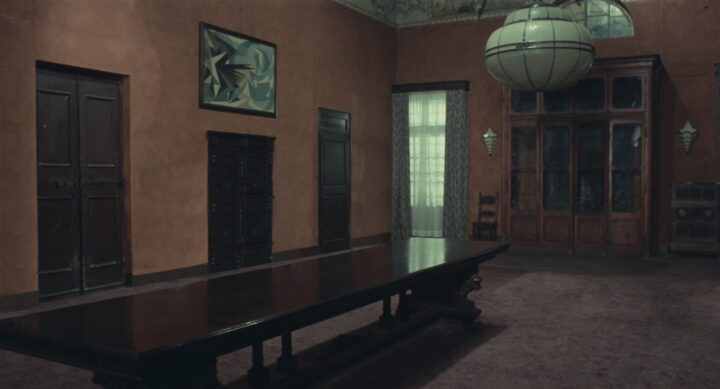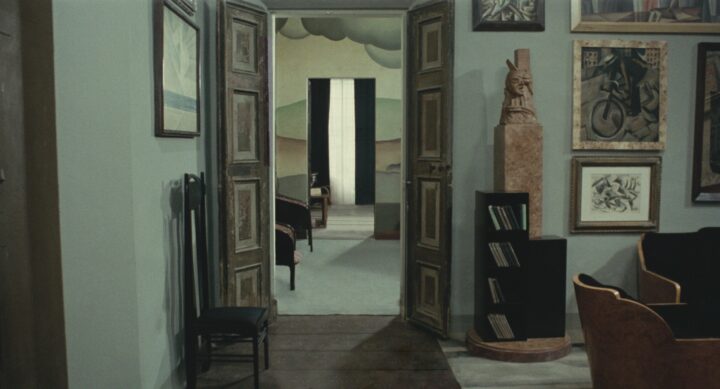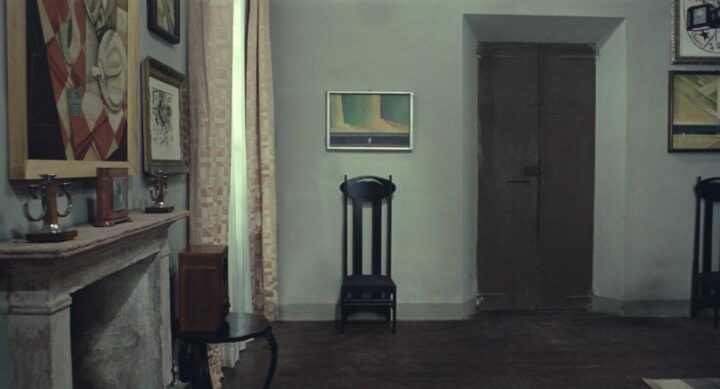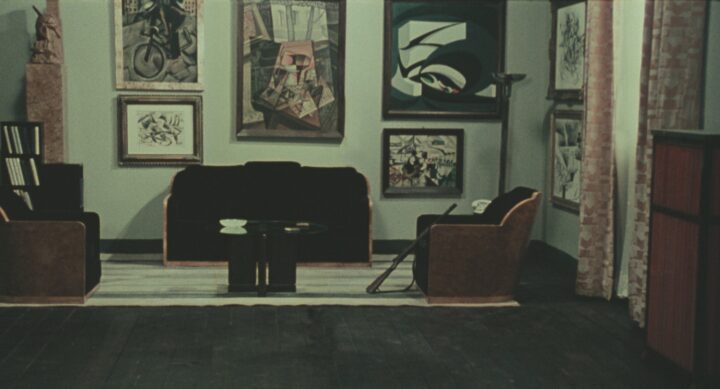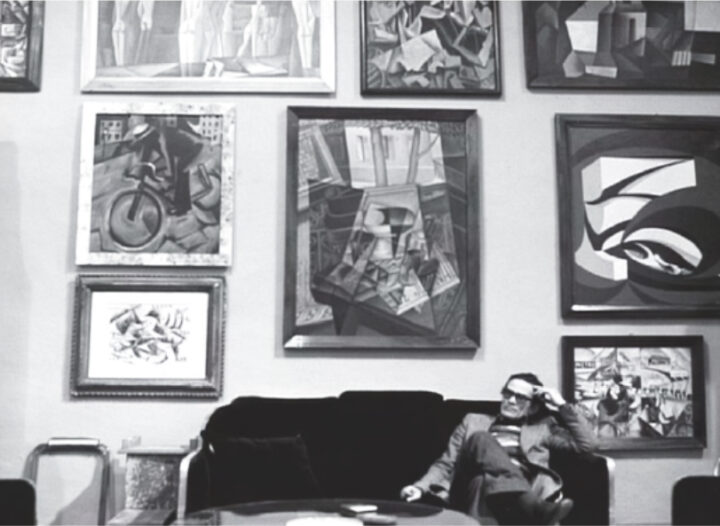The Setting of Violence (2022 – 2025)
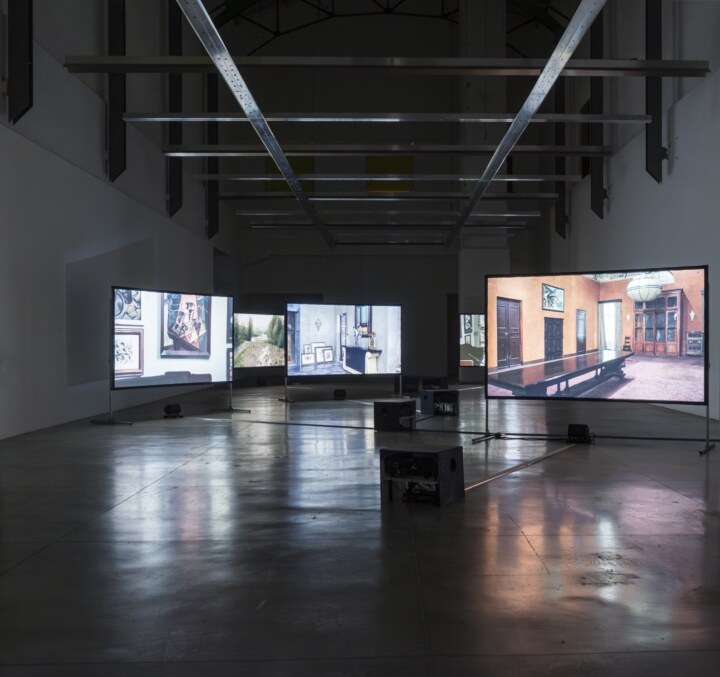
In this photography project, titled The Setting of Violence, I focus on the presence of futuristic paintings on the walls in the film Saló, or the 120 Days of Sodom (1975), by Pier Paolo Pasolini.
Motivation
I saw this movie for the first time as an art student long ago. A group of fascists subject 18 young boys and girls to their cruel power for 120 days in a villa, in the puppet state Salò, in the last year of World War 2 in Italy.
Besides displayed humiliation, torture, and murder, I was immediately struck by how prominent modernist art, especially futuristic painting, was in this film. As an art student, I always associated avant-garde and modernist art with positivism and progressive world views. So, what were these modernist paintings doing in this fascist setting? Are these paintings silent witnesses or accomplices? Did Pasolini denounce the avant-garde for its collaboration with the fascist regime? Or (I don’t think so) did he consider the avant-garde as a victim, abused by these fascist rulers? What connection did Pasolini want to make between futuristic art and these outrages committed by fascist rulers?
There had been a strong relationship between fascism and this avant-garde movement. Filippo Tommaso Marinetti, the foreman of the futurist movement, called himself an ultra-fascist, and Benito Mussolini, the fascist leader, proclaimed that fascism wouldn’t had this form without the futurist movement.
What I do
The final work consists of film frames out of the film Saló (authorized and scanned by Cineteca di Bologna).
I examine Pasolini’s intentions by editing these frames and stripping them of all atrocities, victims, and perpetrators. The paintings in the background now become foreground. What remain are empty spaces with an ominous atmosphere. What took place here, or what is going to take place?
The duration of the film-stills is stretched to a much longer loop. Partly through AI processing, the stills are set in subtle motion again. I zoom in on the paintings, and hover between still and motion, photo and film. The frames become spacious, as if the viewer is inside the rooms. Besides the interiors, two landscape scenes are included in the loops.
The text slides show quotes from Charles Baudelaire, Roland Barthes, and Pierre Klossowski, spoken by these fascists. They cocooned with high culture, probably as legitimization of their misdeeds. The soundscape is composed of (a.o.)sounds outside of the notorious villa, radio “white noise,” with fragments of a radio speech by Mussolini.
Loop in the Museum of Modern Art, MAMbo, Bologna, Italy – The Setting of Violence
Loop in the Museum of Modern Art, MAMbo, Bologna, Italy – The Setting of Violence
Loop in the Museum of Modern Art, MAMbo, Bologna, Italy – The Setting of Violence
Loop in the Museum of Modern Art, MAMbo, Bologna, Italy – The Setting of Violence

Photographs, text projections, soundscape. Rijksmuseum Twenthe, part of the exhibition Marinetti and futurism. Year: 2022/2023
